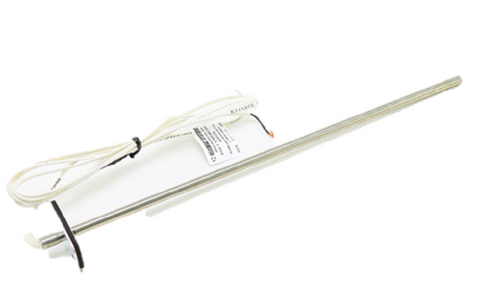
MAMAC Systems TE-701-B-7-D Sensor
MAMAC Systems TE-701-B-7-D Duct Temperature Sensor – 10K Type III Thermistor, 12” Probe, Flange Mount with 6' Cable
The MAMAC Systems TE-701-B-7-D is a high-precision duct temperature sensor designed to provide reliable and accurate air temperature measurement in HVAC systems. This model features a 10,000 Ohm NTC Thermistor (Type III) sensing element, a 12-inch stainless steel probe, and a flange mount with a 6-foot plenum-rated pigtail cable for easy installation.
Engineered for performance and durability, this sensor supports a wide operating temperature range from -40°F to 210°F (-40°C to 100°C) and delivers industry-standard accuracy of ±0.36°F (0.2°C). The tip-sensitive probe ensures fast and precise temperature response, making it ideal for applications in duct-mounted temperature monitoring and control.
Key Features:
-
Model: TE-701-B-7-D
-
Manufacturer: MAMAC Systems
-
Sensor Type: Thermistor – 10K Ohm Type III
-
Probe Length: 12 Inches
-
Mounting: Flange Mount – Directly to duct, wall, or single gang box
-
Output Signal: Resistance
-
Accuracy: ±0.36°F (0.2°C) for Thermistor
-
Temperature Range: -40°F to 210°F (-40°C to 100°C)
-
Temperature Coefficient: Negative (Thermistor)
-
Cable: 6-Foot (1.8m) Plenum-Rated Pigtail
-
Certifications: CE, RoHS Compliant
-
Applications: Commercial HVAC, building automation, duct temperature sensing
-
Construction: Tip-sensitive probe for fast, accurate readings
-
Compatibility: Supports a variety of thermistor and RTD types for broad system integration
Note: Product image may not represent actual item. Please verify specifications before purchase.
Choose the MAMAC TE-701-B-7-D for dependable performance, fast response, and easy integration into your temperature control systems.
QUESTIONS & ANSWERS
Have a Question?
Be the first to ask a question about this.
